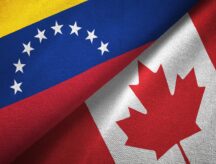IRCC Addresses Hierarchy Issue for Express Entry Candidates Eligible for Multiple Programs
The department of Immigration, Refugees and Citizenship Canada (IRCC, formerly known as CIC) has confirmed that it is changing the hierarchy system with respect to the immigration programs managed through the Express Entry selection system.
As of the next draw from the Express Entry pool, candidates eligible under the Canadian Experience Class (CEC) who have enough Comprehensive Ranking System (CRS) points to be issued an Invitation to Apply (ITA) for permanent residence will receive an ITA under the CEC, regardless of whether they are also eligible under another program.
The CEC is an immigration program for individuals with Canadian work experience who wish to become permanent residents. Until now, candidates who received an ITA under the Federal Skilled Worker Class (FSWC), despite also being eligible under CEC, may have experienced unforeseen problems with respect to meeting the settlement funds requirement and/or obtaining an Educational Credential Assessment (ECA), which is required under FSW but not under CEC.
The change in the program hierarch system came to light following a meeting between representatives from IRCC and representatives from the Canadian Bar Association (CBA), the largest professional association for lawyers in Canada, held in Ottawa on February 24, 2016.
The minutes of this meeting reveal that, in response to a question on ITAs, IRCC stated that it would be ‘changing the hierarchy system so that at the next round of invitations CEC will be ranked before FSW [Federal Skilled Worker} and FST [Federal Skilled Trades].’
Why this matters
Since the introduction of the program hierarchy system last year, in order to balance application levels under the federal immigration programs submitted through Express Entry, the FSWC has been prioritized above the two other programs. In the event that a candidate was eligible under the FSWC and another program (i.e. either CEC or FST), his or her ITA would be issued under the FSWC. The only historical exception to this was a program-specific round of invitations that occurred in February, 2015, in which only candidates eligible under the CEC were issued an ITA.
An ITA issued under the CEC and an ITA issued under the FSWC are not the same. The main difference between the two is that, under the CEC, the applicant is not required to demonstrate settlement funds.
On the other hand, under the FSWC, the Canada Immigration Officer assessing an application must be satisfied that the applicant has enough funds for settlement in Canada. These funds — which range from CAN $12,164 for a single applicant to CAN $32,191 for a family with seven or more members — must be transferable and net of debts or other obligations. The requirement for settlement funds is waived if the applicant has Arranged Employment in Canada.
Because of this differentiating factor, candidates who are eligible under both CEC and FSW — particularly those who may struggle to maintain sufficient settlement funds in their account(s) — would typically prefer to submit their application through CEC.
In its summary of the meeting with IRCC representatives, the CBA Chair noted that CEC applications are ‘both easier for them to process and easier for our clients’, adding that ‘this is a positive outcome resulting from our previous consultations of May and November 2015.’
February 24 Draw
While the IRCC and CBA representatives were busy discussing these matters on the morning of February 24, a total of 1,484 candidates for immigration to Canada through Express Entry received the good news that they had been issued an ITA in the 28th Express Entry draw, the fifth to take place in the first two months of 2016.
This draw also marked the second time this year that the CRS point requirement has been as low as 453. While there was a marginal decrease in the CRS point requirement, relative to the previous (27th) draw, candidates should be mindful that it is expected that the minimum score for Express Entry draws may drop even further as the year progresses and additional draws occur, as per comments made by IRCC towards the end of 2015.
Each draw for the past nine months has selected a portion of candidates who do not have a qualifying job offer in Canada or a nomination from a Canadian province.
Positives on two fronts
“It is interesting to note that at the very moment that IRCC and the CBA were discussing these important matters, lots of people around the world were receiving communication from IRCC that their time had come — they finally had their ITA. It is also heartening to see that IRCC and the CBA can meet and arrive at positive outcomes for all stakeholders, most notably the candidates themselves. Hopefully the switch in program hierarchy is the first of many such instances,” says Attorney David Cohen.
“And while the pace of the overall decrease in CRS point requirements for draws may seem slow to some, people should remember that the first draw after last year’s general election had a CRS cut-off of 489, and the first draw after the current government took office had a CRS cut-off of 484. Since then, we have now had two draws of 453 among four draws in a row below 460. The overall trend is positive for candidates remaining in the pool.”
The 2016 immigration levels plan
The government of Canada is scheduled to table its 2016 immigration levels plan to Parliament on or before March 9, 2016. Among other details, this plan is expected to announce how many immigrants Canada aims to attract over the year and reveal a breakdown in the number of immigrants that will be allocated to the various Canadian immigration programs. This plan is usually presented by November of any given year, but has been delayed on this occasion due to the change in government at that time last year.
Interestingly, last December an IRCC Policy Analyst stated that there may be a correlation between the immigration plan and Express Entry rounds of invitations.
“We expect that in the new year when our rounds start growing — to meet our new levels plan — that the score will reduce,” stated the IRCC Policy Analyst, who added that “The number of invitations issued per round is expected to increase as the pre-Express Entry inventory of applications is finalised. In turn, it is expected that the minimum score of those that are invited to apply will drop.”
With this projection in mind, it may be the case that the objectives contained in the immigration plan will be the catalyst for a further reduction in CRS point requirements for draws from the Express Entry pool.
To find out if you are eligible for any of over 60 Canadian immigration programs, including the federal economic programs that are processed under Express Entry, please fill out a free online assessment today.
© 2016 CICNews All Rights Reserved
- Do you need Canadian immigration assistance? Contact the Contact Cohen Immigration Law firm by completing our form
- Send us your feedback or your non-legal assistance questions by emailing us at media@canadavisa.com





